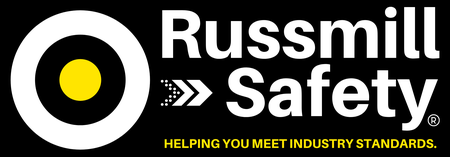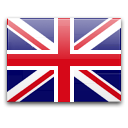
The Essential Guide to Head Protection Safety
Why is Head Protection Safety Important?
Head protection safety is crucial in various industries and workplaces. It helps prevent serious injuries and even fatalities caused by falling objects, electrical hazards, or impacts. According to the Occupational Safety and Health Administration (OSHA), head injuries account for a significant number of workplace accidents. Therefore, understanding the importance of head protection safety is essential for both employers and employees.
OSHA Standards and Regulations
OSHA has established specific standards and regulations to ensure head protection safety in the workplace. These standards outline the requirements for protective helmets and headgear, including design, performance, and testing criteria. It is crucial for employers to comply with these standards to provide a safe working environment for their employees.
Choosing the Right Head Protection
When it comes to head protection, it is essential to choose the right equipment for the specific hazards present in the workplace. Different industries may require different types of head protection, such as hard hats, bump caps, or safety helmets. Employers should assess the potential risks and select headgear that meets the necessary safety standards.
Inspecting and Maintaining Head Protection
Regular inspection and maintenance of head protection equipment are vital to ensure its effectiveness. Employers should establish a routine inspection schedule and provide training to employees on how to properly inspect their headgear. Any damaged or worn-out equipment should be replaced immediately to maintain optimal safety levels.
Training and Education
Proper training and education are essential components of head protection safety. Employers should provide comprehensive training programs to educate employees about the importance of head protection, how to properly wear and adjust headgear, and the signs of damage or wear. Additionally, employees should be aware of the specific hazards in their workplace and understand the appropriate safety measures to take.
Expiration Dates and Safety Codes
Head protection equipment, like any other personal protective equipment (PPE), may have expiration dates. It is crucial to regularly check the expiration dates and replace any equipment that has expired. Additionally, safety codes and standards may change over time, so it is essential to stay updated and ensure compliance with the latest regulations.
Get to know the U.S., European, and Canadian standards for safety helmets
Unsure what kind of safety helmet you need? What hard hats comply with what standard? Where to start? We want to make sure staying compliant is second nature, especially when it comes to keeping your head safe.
There’s a lot to know and a lot to pay attention to when it comes to safety helmets, but don’t worry – we’ve done the research for you. In this blog, we’ll dig into OSHA, ANSI, EN, and CSA standards.
OSHA standard – U.S.
The Occupational Safety and Health Administration (OSHA) mandates specific requirements for head protection in the workplace and instructs that, regardless of industry, it’s the employer’s job to ensure their workers wear head protection when exposed to risks/hazards. To help employers follow those regulations, OSHA incorporates standards from the American National Standards Institute (ANSI), which is discussed in the next section.
Here’s what you need to know about OSHA’s head protection regulations.
Safety helmet standards: OSHA has two standards that regulate safety helmet requirements:
- 29 CFR 1910.135: Governs safety helmet requirements for general industry workers
- 29 CFR 1926.100: Refers to head protection requirements for construction, demolition, and renovation workers
Safety helmet requirements: Both standards require workers to wear safety helmets if they are at risk of being struck by falling objects, bumping their heads on fixed objects, or coming in contact with electrical hazards.
OSHA requires selection criteria for head protection that must comply with ANSI/ISEA Z89.1. Simply put – a helmet that meets ANSI Z89.1 is OSHA compliant.
ANSI/ISEA Z89.1 standard – U.S.
ANSI helps employers follow OSHA regulations. The performance criteria for head protection is provided in ANSI Z89.1 American National Standard for Industrial Head Protection, which is incorporated in OSHA’s 29 CFR 1910.135 and by reference in 29 CFR 1910.6. ANSI Z89.1 requires four performance tests that must be met in order to assign a safety helmet type and class, which are:
- Force Transmission
- Apex Penetration
- Flammability
- Electrical Insulation
Safety helmet types: There are two types of protective safety helmets under this classification system that refer to impact/penetration protection:
- Type 1: Designed to reduce the force of impact resulting from a blow to the top of the head
- Type 2: Designed to reduce the force of impact resulting from a blow to the top, front, back, and sides of the head
Safety helmet classes: To improve comprehension and usefulness, there are electrical-protective classifications for helmets as follows:
- Class G – General helmet: Designed to reduce exposure to low voltage conductors, proof tested at 2200V
- Class E – Electrical helmet: Designed to reduce exposure to high voltage conductors, proof tested at 20,000V
- Class C – Conductive helmet: Not intended to provide protection against contact with electrical conductors
Operating temperature range:
- Basic temperature applications from -18°C (0°F) to 49°C (120°F) – No special marking on the helmet
- Low-temperature applications down to -30°C (-22°F) – Labeling on the helmet “LT”
- High-temperature applications up to 60°C (140°F) – Labeling on the helmet “HT”
Additionally, all safety helmets must feature a hard-outer shell and a lining that absorbs shock and incorporates a headband. Straps should suspend from the shell about 1-1¼ inches.
It is important to know that all safety helmets that adhere to ANSI/ISEA standards should be permanently marked with the manufacturer, the date of manufacture, ANSI designation, the Type and Class designation, and the head size range on the inside of the helmet shell. If your current safety helmet label is missing or is no longer legible, it is recommended that you replace your safety helmet as soon as possible.
EN standards – Europe
EN397: The European standard code of practice (EN 397) provides guidance for manufacturers of safety helmets to ensure that minimum material grades are used. It also establishes the requirements for the testing of safety helmets, as safety helmets must be designed to protect the wearer from falling objects. Such protections safeguard the user against possible consequences such as brain injuries or skull fractures. The standard also includes protection against lateral deformation of the helmet.
The helmet will comprise of two main parts – the hard outer protective shell and the inner harness. All helmets certified according to EN 397 must meet these requirements:
- Shock absorption, vertical
- Penetration resistance (against sharp and pointed objects)
- Flame resistance
- Chin strap attachment: chin strap releases at minimum 150N (Newtons) and maximum 250N
Additional specifications are provided for ear muff attachment points and chin strap attachment points.
EN50365: Standard covers insulating helmets aimed at use on low voltage installations, which must provide protection against electric shocks and prevention of dangerous electric current passing through the head. Requirements include:
- All helmets must also meet the requirements in accordance with EN 397
- Protection against alternating voltage of up to 1000 V (AC) or direct voltage up to 1500 V (DC)
- Insulating helmets must not contain any conductive parts
- Air vents (if available) must not allow any accidental contact with live parts
EN14052: Standard covers high-performance industrial helmets, which must provide protection against falling objects and lateral impact along with the resulting damage to the brain, skull, and neck. Requirements include:
- Shock absorption, vertical, and lateral
- Penetration resistance, vertical, and lateral
- Fastening system yield: Chin strap yields at minimum 150N and maximum 250 N
- Fastening system effectiveness: During the shock absorption and penetration test, the helmet must not become detached from the test head
- Flame resistance
EN12492: Helmets for mountaineers must provide protection against hazards that may occur during activities undertaken by mountaineers. Requirements include:
- Shock absorption, vertical, frontal, lateral, dorsal
- Penetration resistance
- Carrier element (chin strap releases at min. 500N)
- Strength of carrier element: Chin strap may exhibit maximum elongation of 25mm
- Carrier element effectiveness: Helmet must not slide from the head
CSA Z94.1 standard – Canada
The performance criteria for head protection in Canada is provided in the Canadian Standards Association (CSA) Industrial Protective Headwear, Z94.1 which applies to the selection, maintenance, and use of industrial safety helmets in the construction, mining, public utilities, and forestry sectors. Along with optional tests, such as for reverse orientation, CSA Z94.1 requires six performance tests that must be met in order to assign a safety helmet type and class, which are:
- Dielectric Strength
- Impact Attenuation
- Penetration Resistance
- Passive Retention (Stability)
- Shell Flammability
- Liner Ignition Resistance
Safety helmet types: The CSA Standard (Z94.1) tests for Type 1 and Type 2 safety helmets include dielectric strength, impact attenuation, penetration resistance, passive retention, shell flammability, and liner ignition resistance (typically only Type 2 for lateral impact).
- Type 1: Crown only headwear – Designed for applications where it can be shown that there is no hazard related to lateral impact; reversible headwear should be selected if required
- Type 2: Crown and lateral headwear – Designed for applications where there is potential impact on the crown and lateral areas of the head, where moving objects are present, and when the hazard assessment cannot determine the type
Safety helmet classes: To improve comprehension and usefulness, the following designations refer to impact and penetration protection:
- Class G - General helmet: Headwear is non-conducting and is required to pass the dielectric strength test of 2,200 volts for 1 minute
- Class E - Electrical helmet: Headwear is non-conducting and is required to pass the dielectric strength test of 20,000 volts for 3 minutes
- Class C - Conductive helmet: Headwear does not provide dielectric protection
77.1710 standard – MSHA PPE requirements
The Mine Safety and Health Administration (MSHA) is an agency under the Department of Labor that works to prevent illness, injury, and death by promoting safe work practices for U.S. miners.
Like OSHA, the agency’s regulatory authority is derived from a specific law, which the agency in turn enforces. MSHA carries out provisions of the Federal Mine Safety and Health Act of 1977, as well as administers the Mine Improvement and Emergency Response Act of 2006, which further expanded requirements and sanctions for mines.
Mining safety helmet standards: Regarding protective clothing requirements, MSHA has its own PPE standard under 77.1710, and Section (d) specifies the need for head protection from falling objects and to protect miners against electrical shock or burn.
- Hard hats must meet or exceed the ANSI Z89.1 specifications (mentioned in the previous section)
- If helmets are painted, the paint base must be nonmetallic
Conclusion
Head protection safety is a critical aspect of workplace safety. By understanding the importance of head protection, complying with OSHA standards, choosing the right equipment, and providing proper training, employers can create a safer work environment. Remember, protecting your head means protecting your life.




